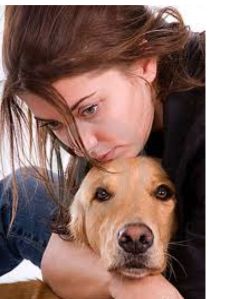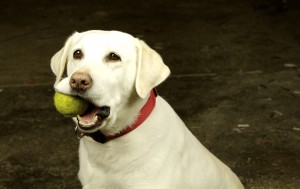More than 40% of domestic violence victims stay in abusive situations out of fear of what would happen if they left their pets behind. Not only that, but more than 70% of pet owners entering shelters to escape domestic violence report that the abuser has threatened, injured or killed family pets.Yet most shelters do not admit pets. Finding family or friends who will take in the victims of abuse AND their pets can be difficult.
Now, shelters are beginning to address this problem.
Ahimsa House has been providing safe housing for pets belonging to those fleeing domestic abuse since 2004. They maintain a network of homes willing to offer safe, short-term housing for pets as their owners enter shelters to escape domestic abuse. Their website has a nationwide directory of safe havens for pets in domestic violence situations.
New York City’s first co-sheltering program was opened to enable domestic violence survivors and their pets to reside together. The project, called PALS—People and Animals Living Safely—is running as a six-month pilot that started June 1.
Although PALS only accepts cats and smaller animals such as hamsters, birds and fish into shelter now, the goal is to raise money to put the PALS program in three other domestic violence shelters and welcome dogs as well.
Muriel Raggi, a domestic violence survivor who was in shelter four years ago, said she’s thankful to URI and the Alliance for recognizing how important pets are in people’s lives. “I remember lying in bed at night, with so many fears and worries swirling in my head, wishing I could have my dog Jasmine next to me to provide raw affection, comfort and support,” said Raggi. “ PALS will ensure that other survivors with pets won’t face the heartbreaking choices I did.”
Because pets are often used by abusers to maintain control over their victims, to torment them emotionally, or to get revenge, 25 states now offer court-ordered protection for pets. Such protection orders limit the contact an alleged abuser can have with the person seeking protection, ordering the abuser to stay away or allowing the victim safe access if they need to return to a home. In the case of an animal, it would allow victims to take a pet with them if they left home and prohibit the alleged abuser from harming the pet.




 Is anyone else a bit gutted that the last episode of Animal Heroes is on Tuesday? This fantastic documentary series follows the lives of animals and their handlers in the armed forces, providing an in-depth look at the experiences of the incredible animals that work hard to keep our country safe.
Is anyone else a bit gutted that the last episode of Animal Heroes is on Tuesday? This fantastic documentary series follows the lives of animals and their handlers in the armed forces, providing an in-depth look at the experiences of the incredible animals that work hard to keep our country safe.





 Funniest Dog Stuff Ever!
Funniest Dog Stuff Ever!